Uh? What?
Maybe you know better the name "slide rules". Or maybe not even that one… Short version: log(x*y) = log(x)+log(y), so if you have a pair of rulers with a logarithmic scale, you can use them to perform multiplications and divisions. More details on dedicated sites, like Ron Manley's one o Eric Marcotte's one.
All right, let's pretend we've understood that…
I have here a classic slide rule, and a cylindrical slide "rule" (of the Otis King variety). I want to show how to perform a couple of simple operations.
Multiplication
We want to multiply 7 by 3. Easy, right?
Let's start with the slide rule:
- make 1 on the C scale match with 7 on the D scale
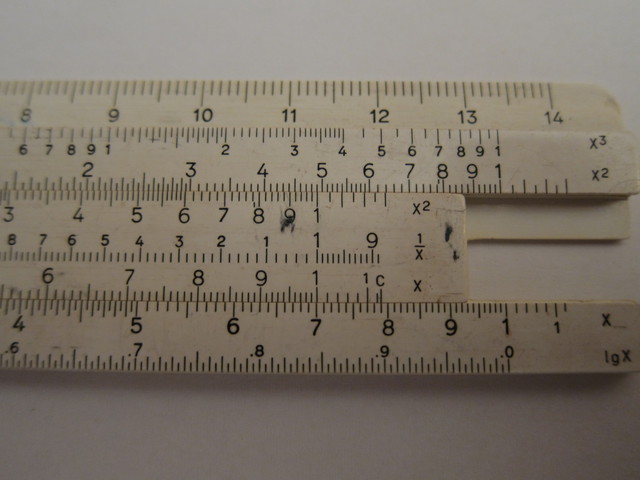
-
look with what, on the D scale, matches 3 on the C scale
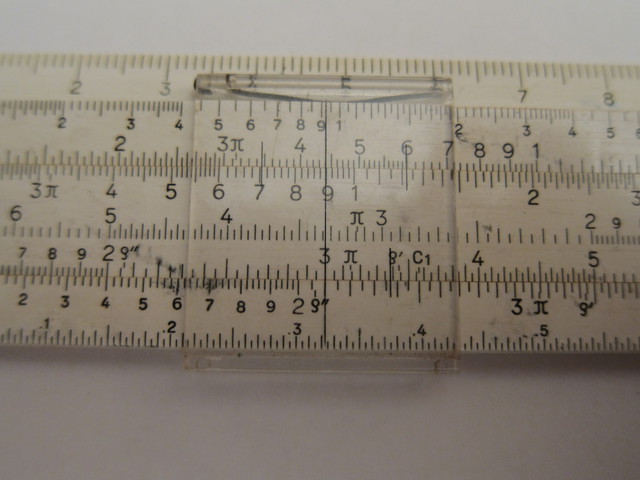
21, which is our result [1]
With the cylindrical rule things are a bit more awkward.
- point to 1 on the lower scale, with the cursor
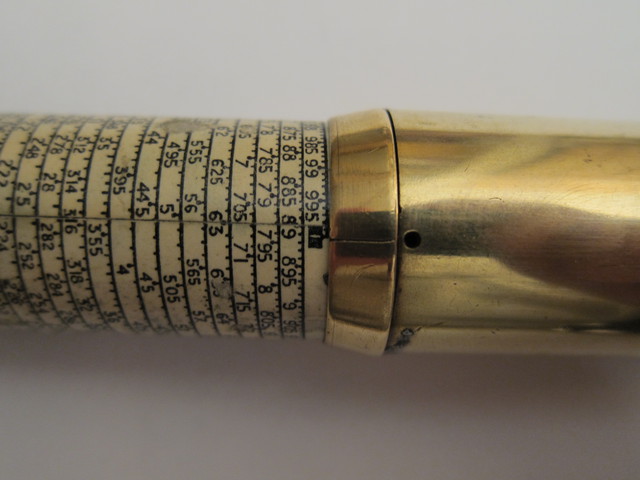
- point 7 on the upper scale, moving only this scale

- now move only the cursor, making it point to 3 on the lower scale
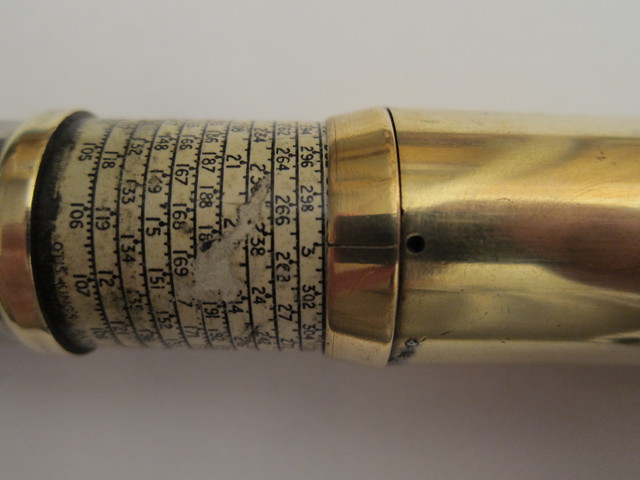
- on the upper scale we read our result

It's totally equivalent to the linear rule: the two logarithmic scales are equal, so a translation on one, "sums" to the other.
Division
Let's divide 24 by 4.
Linear rule:
- make 4 on the C scale match with 24 on the D scale
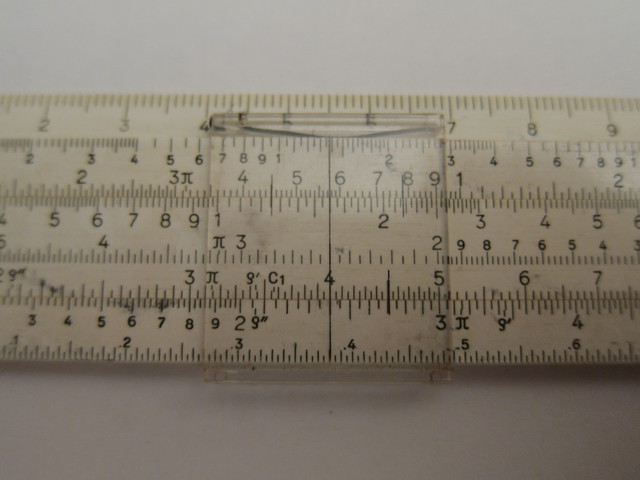
-
look with what, on the D scale, matches 1 on the C scale
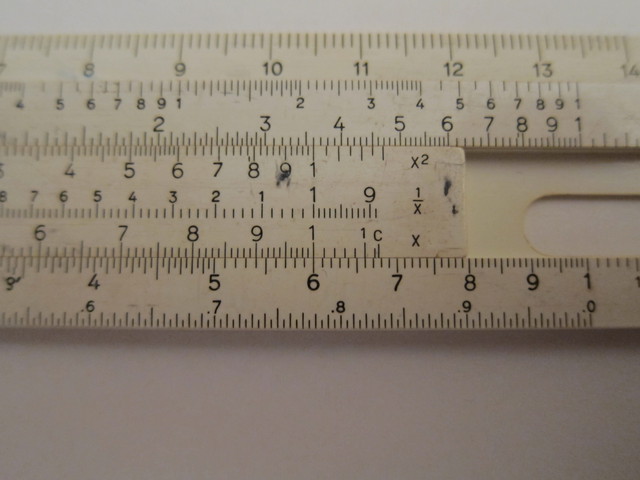
6, again our result.
Cylindrical rule:
- point to 4 on the lower scale, with the cursor
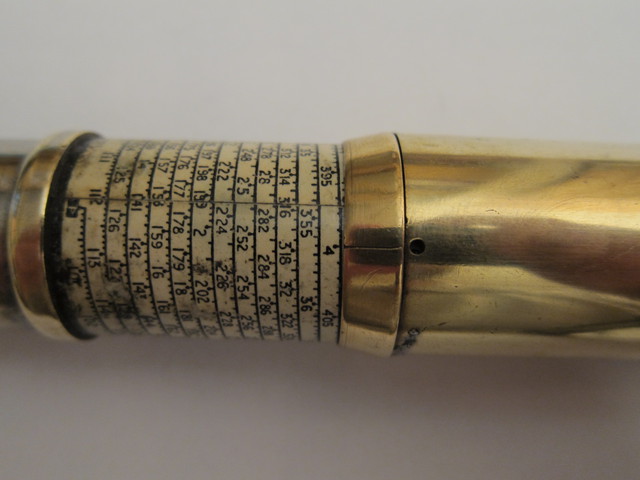
- point 24 on the upper scale, moving only this scale

- now move only the cursor, making it point to 1 on the lower scale
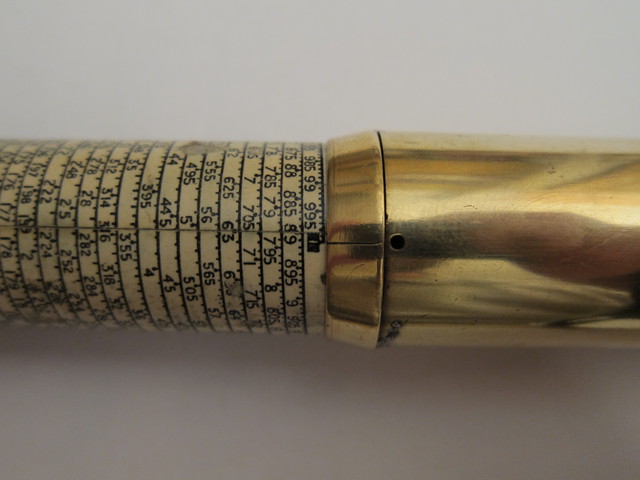
- on the upper scale we read our result [2]

Some notes
The advantage of the cylindrical rule is that it allows longer scales in a small space; the longer the scale, the more precise you can be in reading it.
The advantages of the linear rule are in the ease of use, and in the simplicity of concatenating operations one after the one, especially when using more than 2 scales (the slide rule you see above has 6 scales: two regular ones, two quadratic, one reciprocal, one cubic).
OK, I cheated a bit, since at first glance you'd think of using the other 1 on the C scale (the one on the left hand side), but if you try that, the 3 on C ends up out of the rule; the trick works because it's equivalent to:
- divide 7 by 10 (10C:7D → 1C:7D (this 7 is outside the rule, on the left hand side))
- multiply that by 3
or, if you prefer, 7CI:1D 3C:21D (using the reciprocal scale).
just as in the multiplication with the linear rule, here too we are reading on the "wrong side" of the scale; it works for the same reason.


